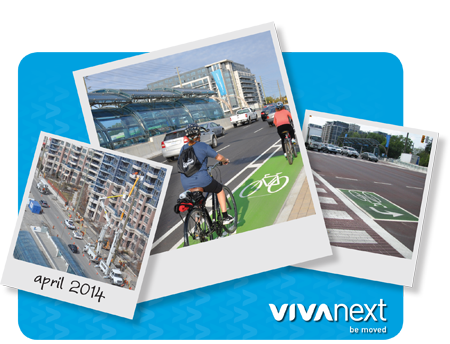If you’ve ever stood at the bottom of a hill in a field or forest at the end of a sudden summer rain shower, you’ll have seen how water naturally runs down to the lowest point, then gradually drains away, soaking into the ground and running into the nearest stream or pond. Obviously, water will always drain in a downward direction, even when a site becomes developed by roads or buildings. Engineers use what are known as “storm water management” techniques to minimize the negative impacts of changes in drainage associated with new development and construction.
The drainage needs of the widened road network that are being built for vivaNext are no different from those in a new housing development or a natural forest: at the bottom of every hill, water will collect and need to be drained away somewhere. So, storm water management has one overarching goal: to mimic as much as possible the natural, pre-developed conditions of a site in terms of both how water drains, and the quality of the water that is being drained.
There are a number of tools that are used in storm water management, depending on the situation. On the vivaNext rapidway project, the primary tool is the storm sewer system. Storm sewers run under the roadway, collecting water that runs off the road through storm sewer inlets. These inlets are either set horizontally into the road beside the curb, or vertically into the curb itself.
The more an area is developed or paved the less permeable ground there is to absorb run-off, resulting in more water needing to be drained through the storm water system. Specialists do hydraulic calculations to determine how much water will collect on the roadways during a typical storm, and ensure that the storm sewer system can drain it away promptly. Storm sewers drain into the naturally occurring creeks and streams that exist throughout our urban areas, although many have been buried so you won’t be aware of them. In some areas, these pipes may be aging and ready to be replaced to accommodate the increased volumes of run-off.
In addition to preventing flooding, the other critical component of storm water management is to mimic the natural conditions where rainwater is filtered through the ground, leaving the eventual run-off as clean as possible.
To replicate this natural filtering mechanism on roadways, water collected in the storm sewers runs through a special filter called an Oil Grit Separator [OGS] before it is released into a creek or stream. OGS are designed to capture substances like grit, oil and sand that collect on a roadway and get washed away during a rainstorm.
Another tool to improve the quality of run-off is the use of storm water management ponds, which contain and filter the outflow from storm sewers in a more natural way, trapping the grit and oil in their muddy bottoms, producing cleaner water that flows into watercourses or pipes.
Storm water management is an important issue that is overseen by a variety of approving bodies, including federal and provincial ministries, and in the case of our vivaNext projects, two conservation authorities.
How we plan drainage for water is one of those important components of any project that will be unseen to most. But whether or not you can see it, respecting the natural environment is important to everyone, and in the last few years the storms and crazy weather we have experienced have truly made that more apparent!










